
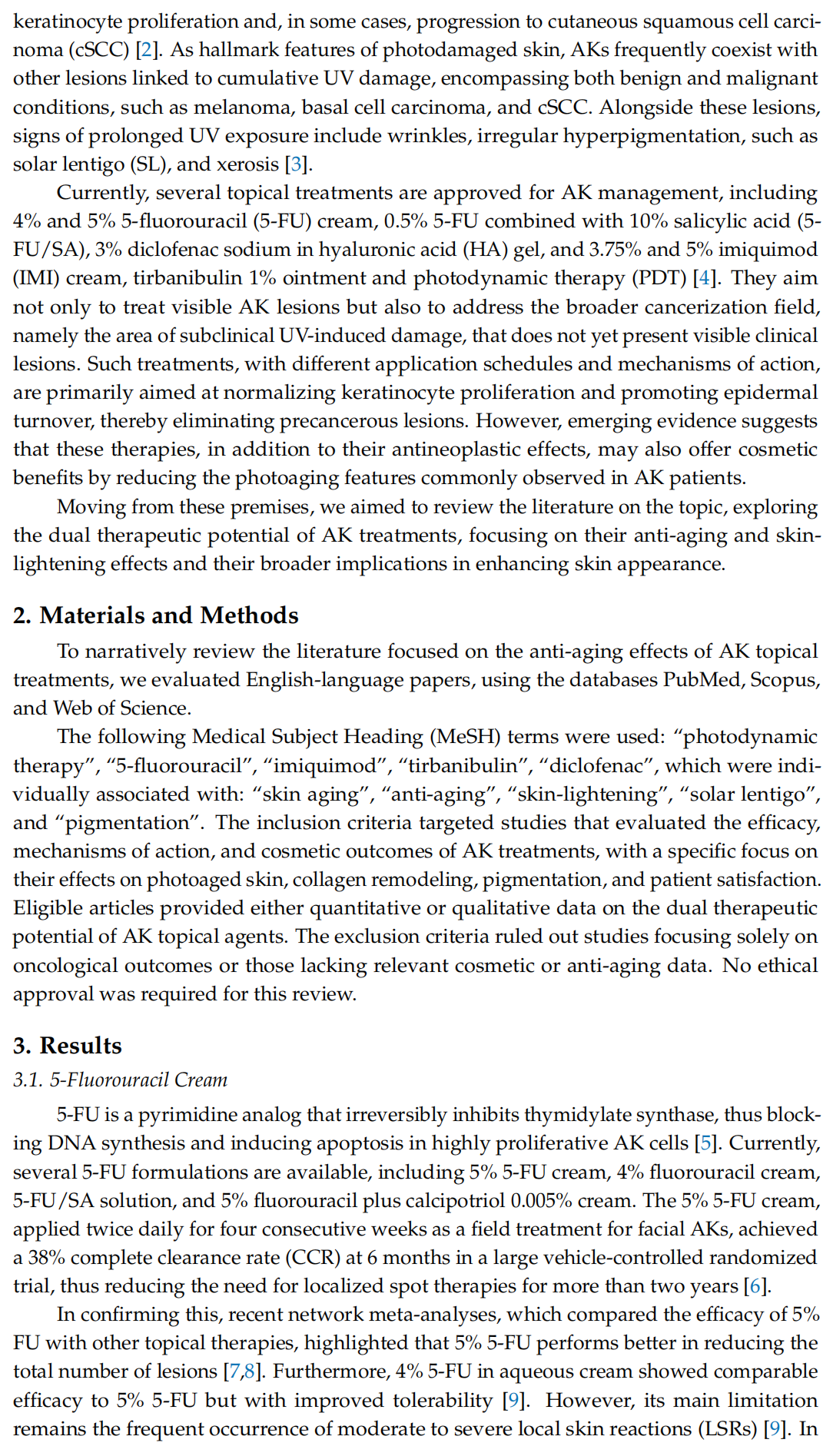
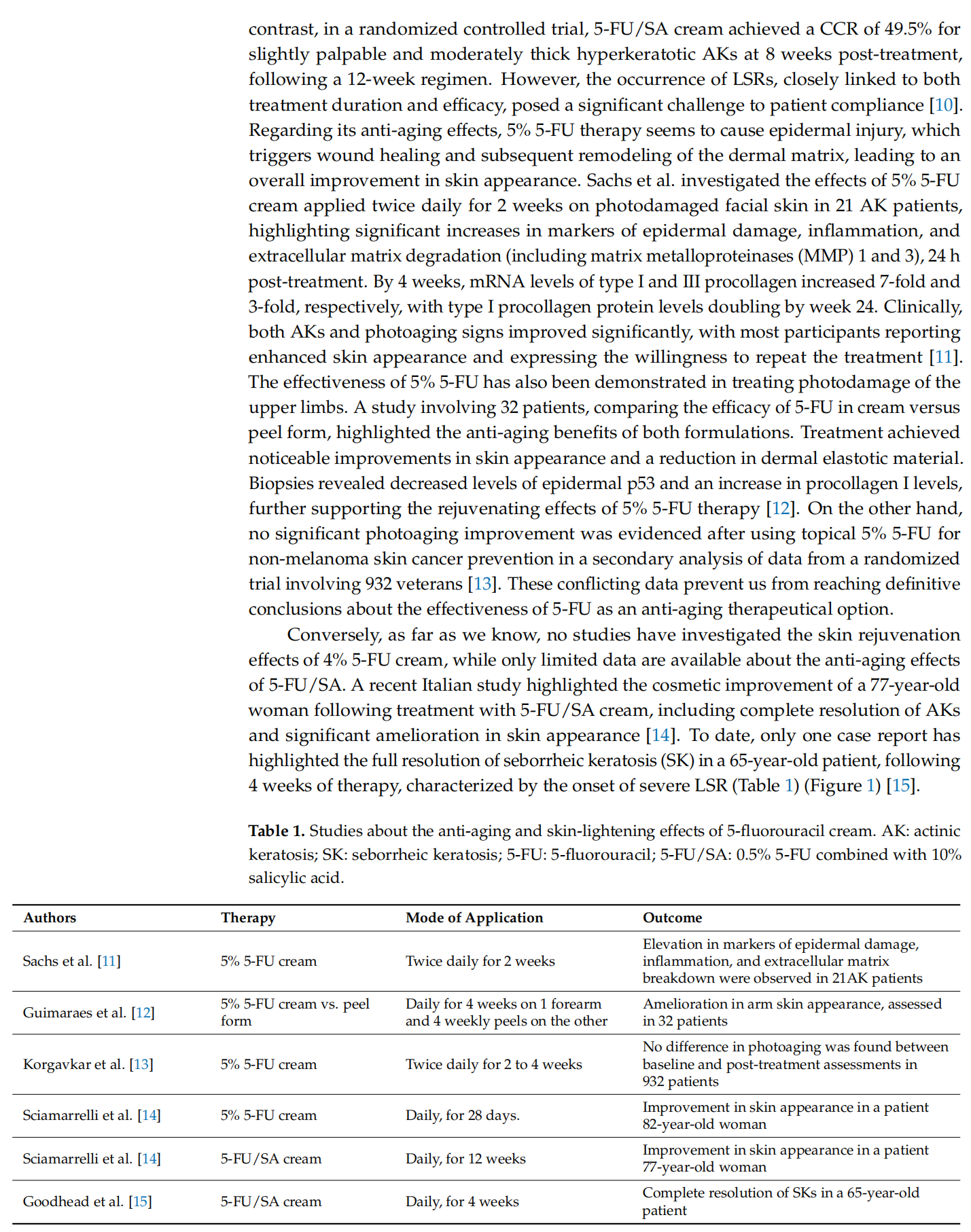
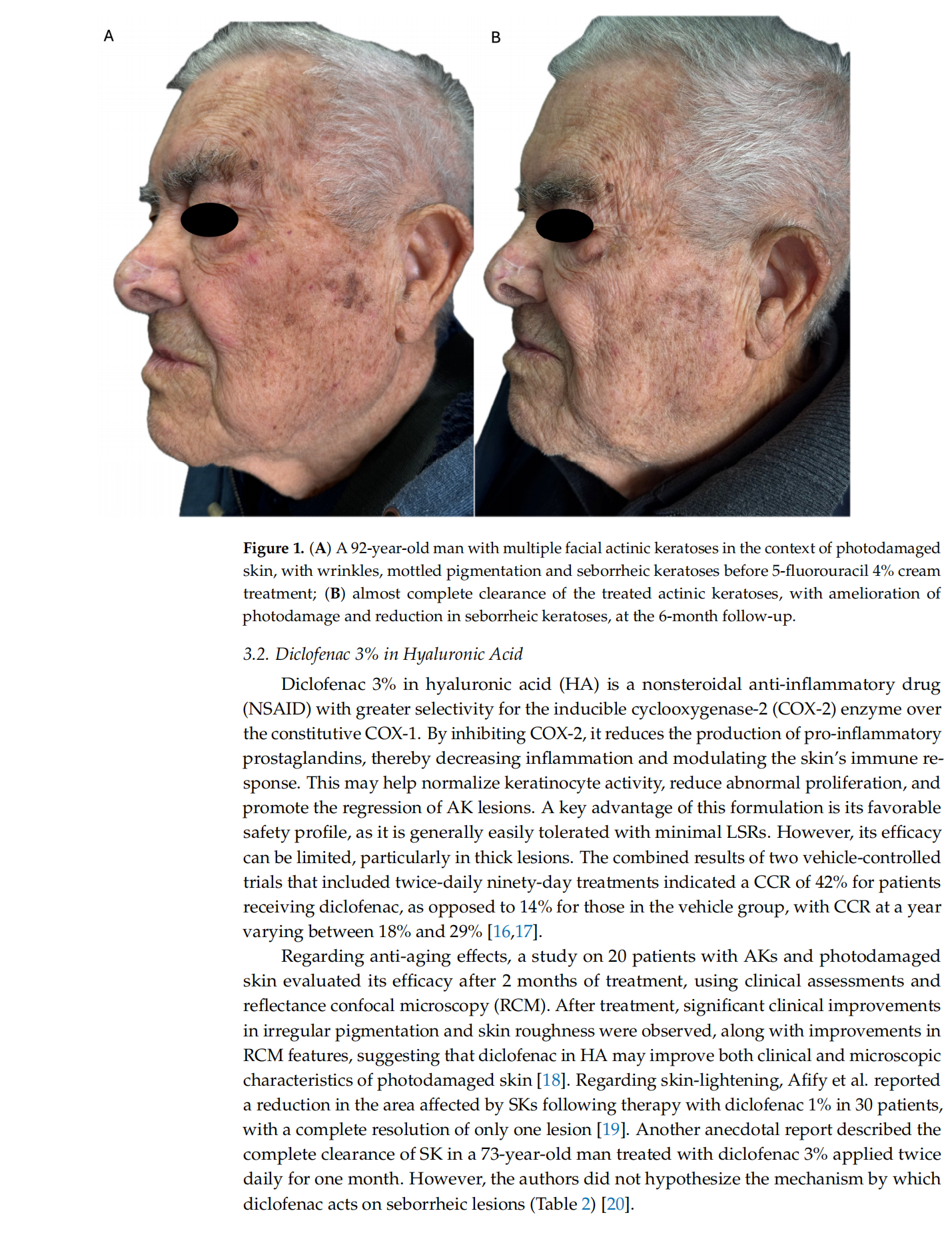
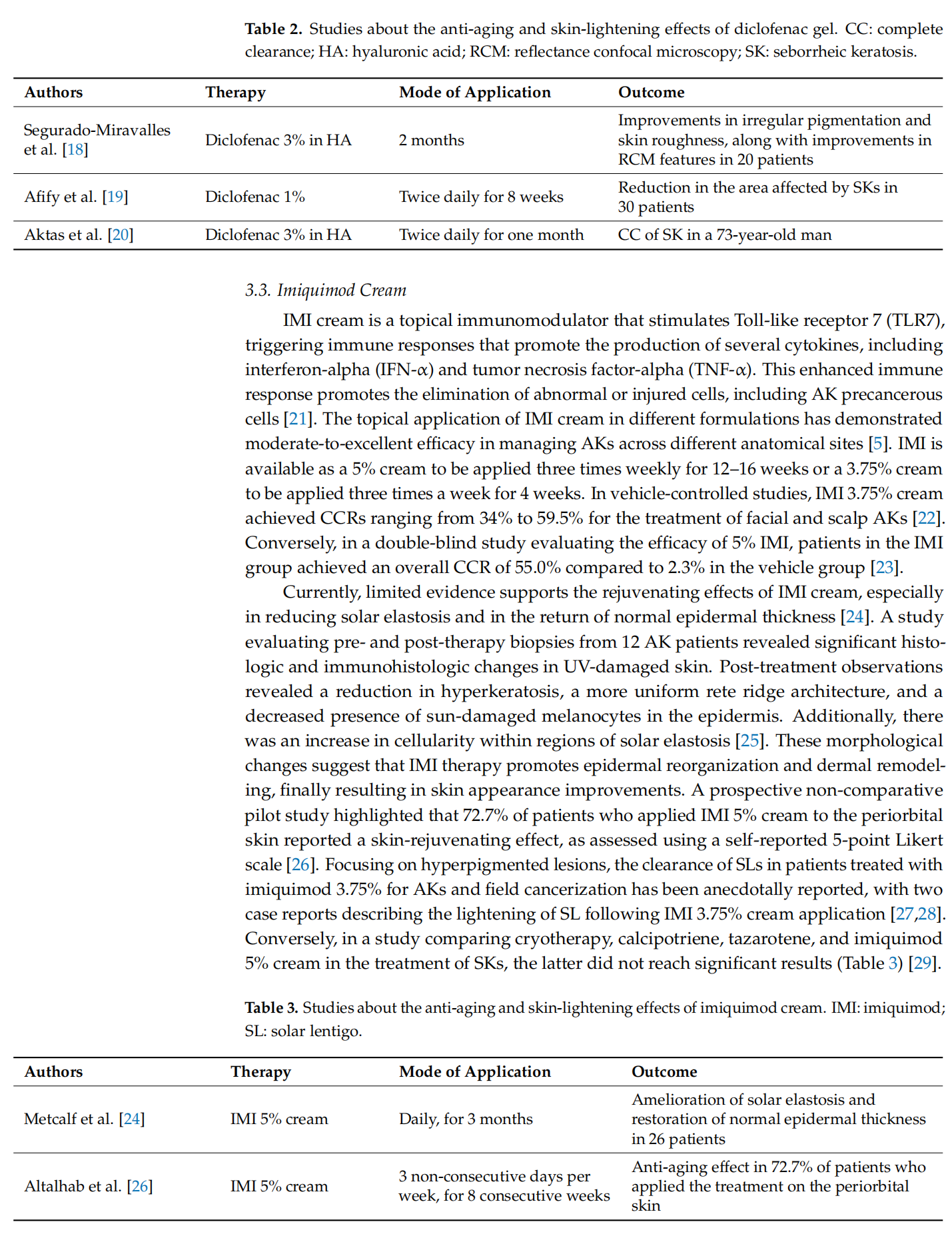
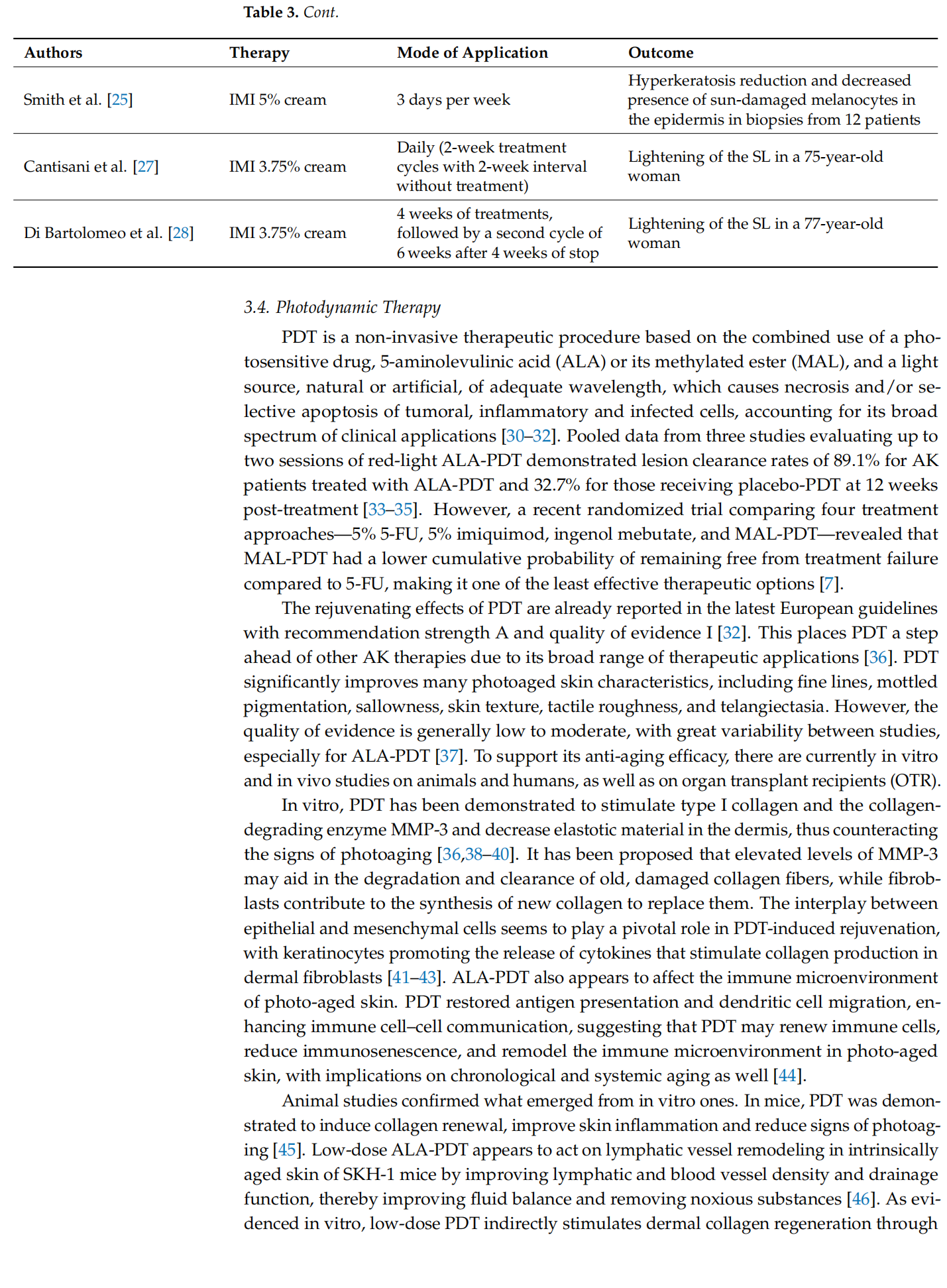
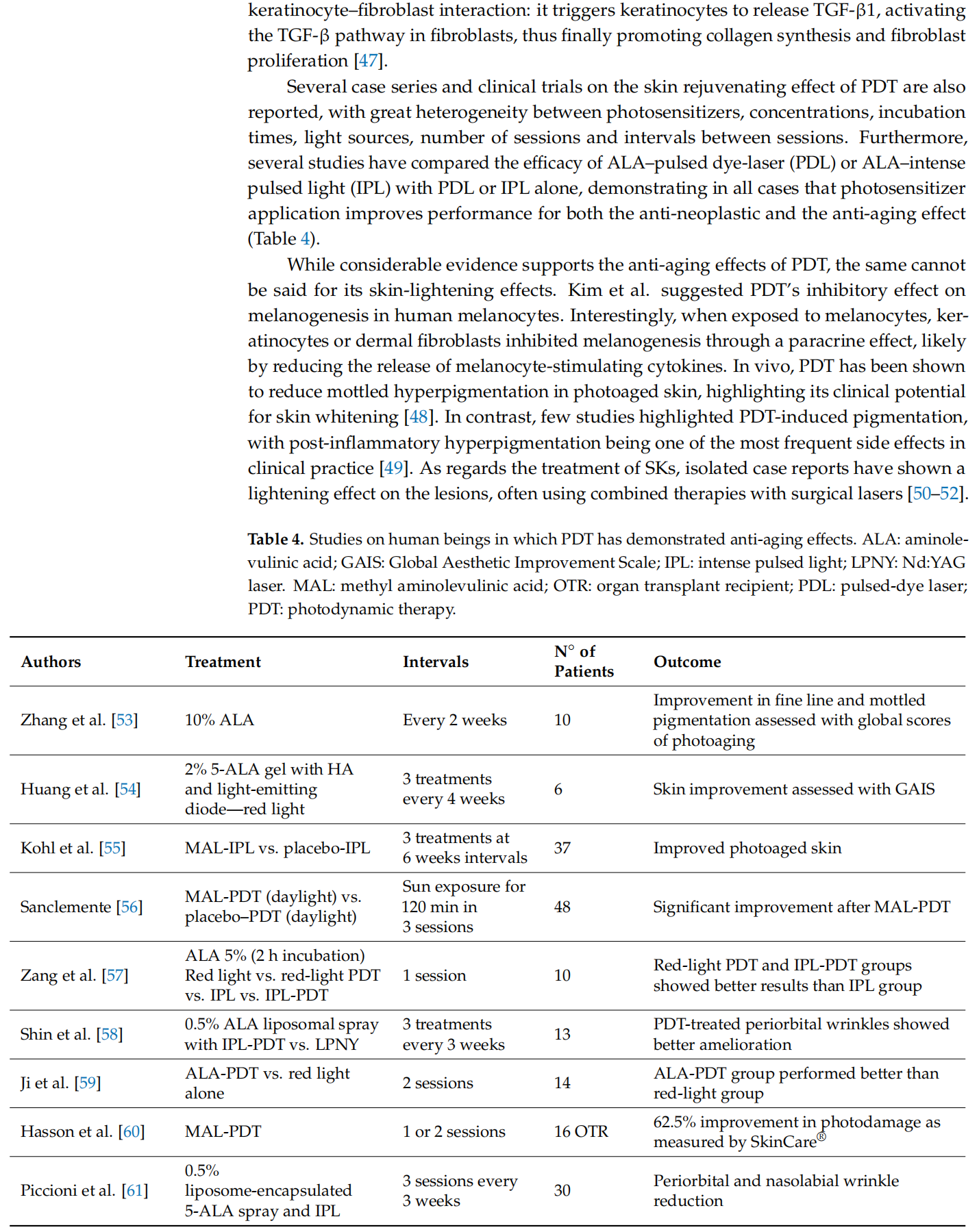
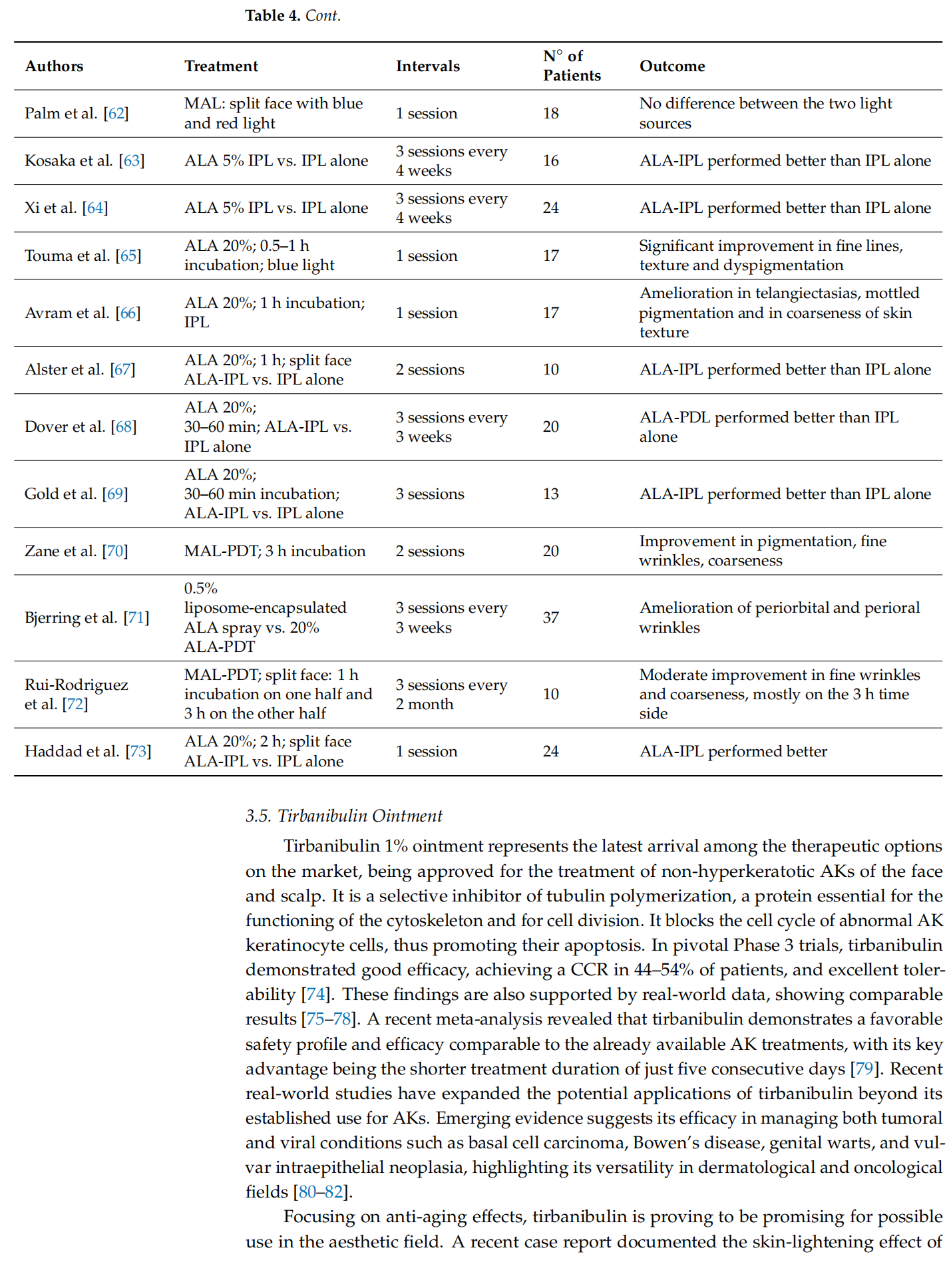
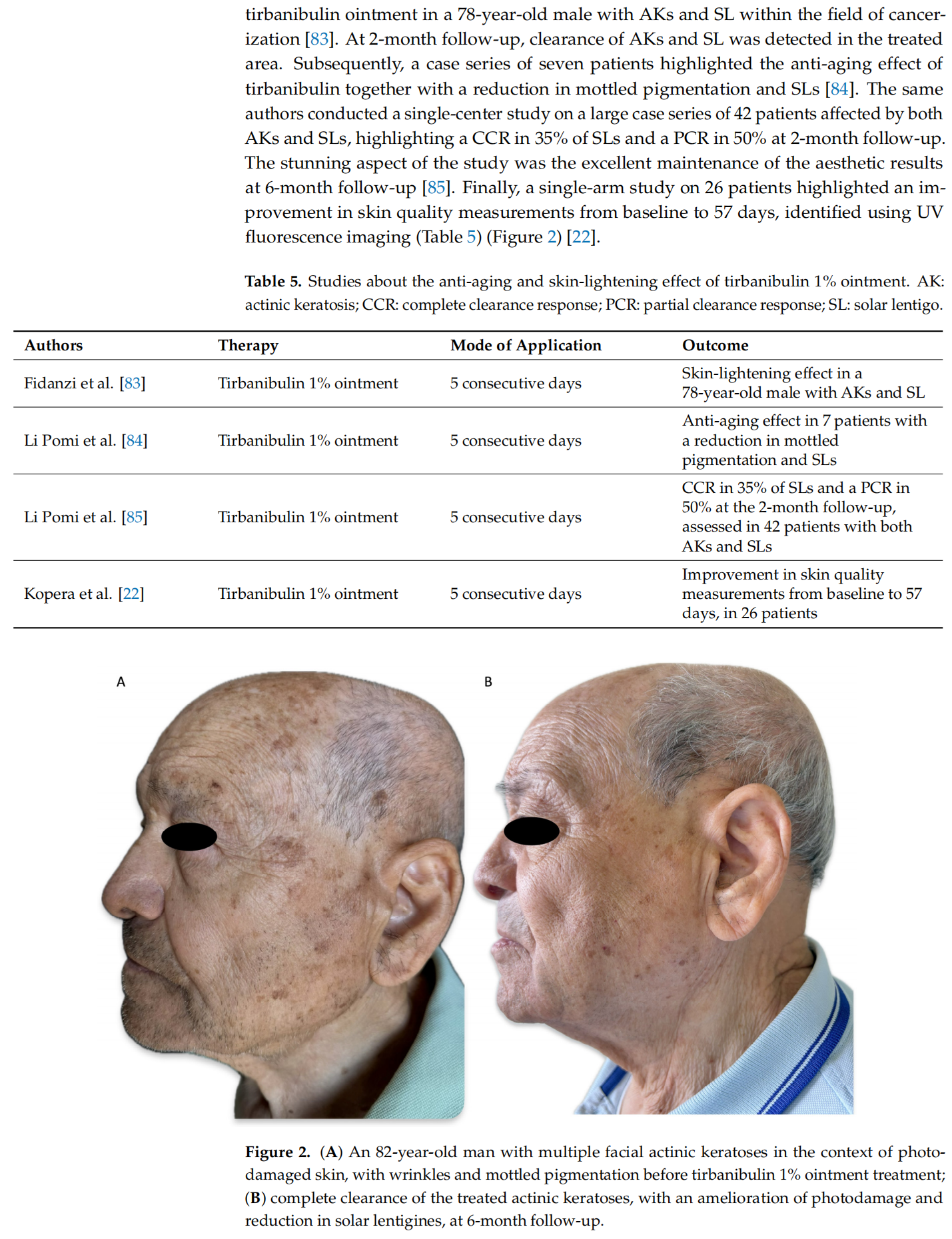
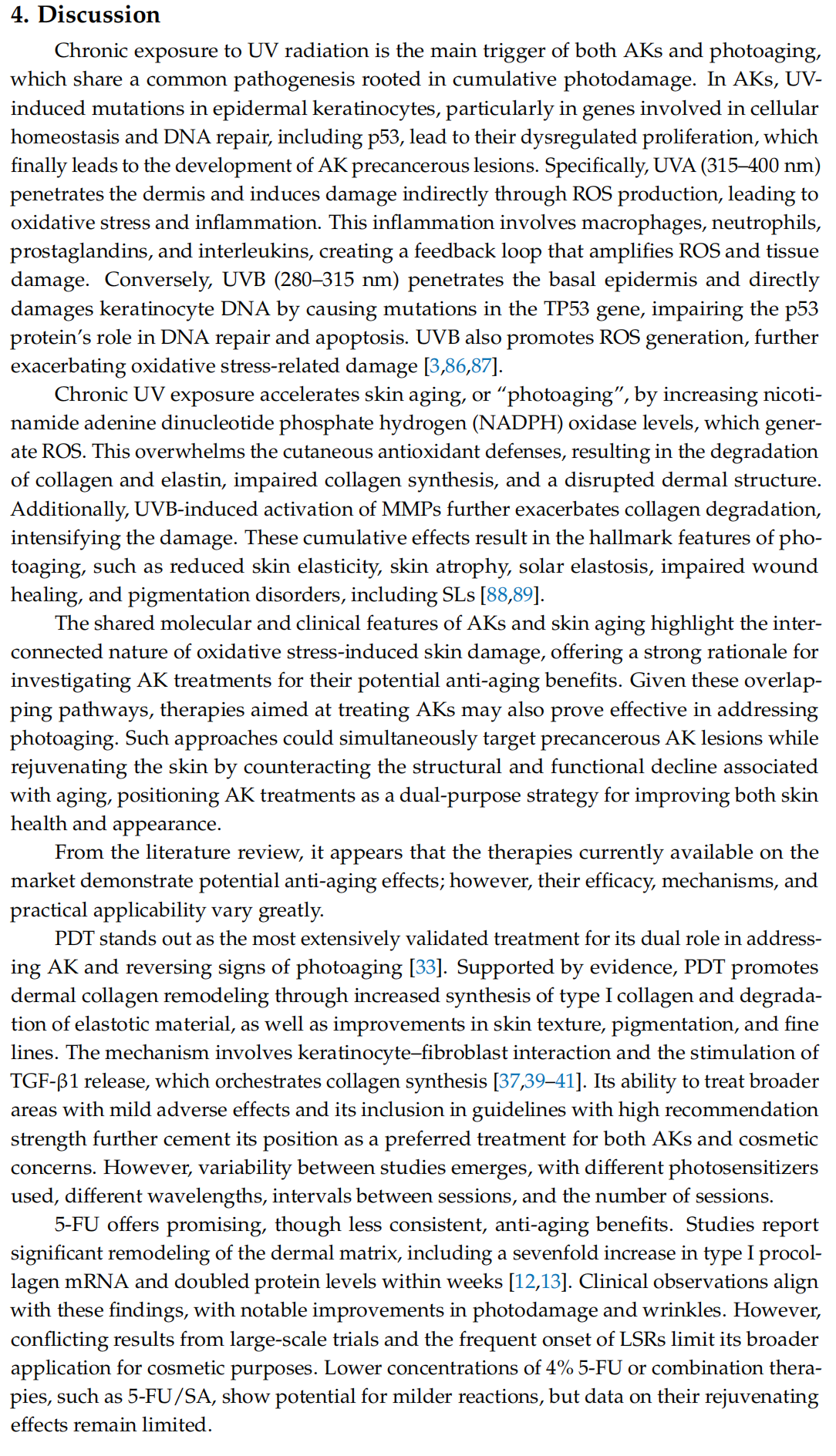
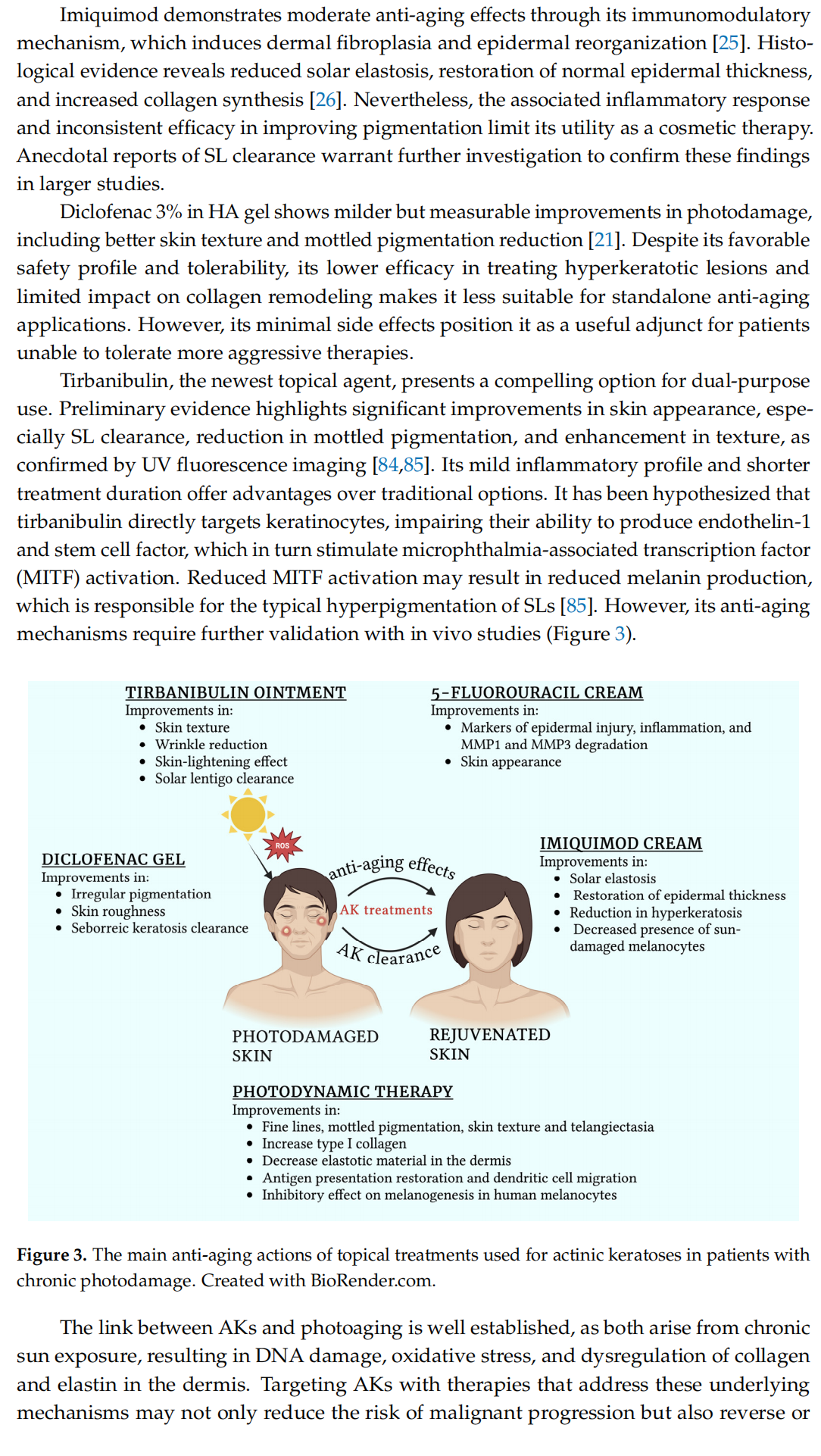
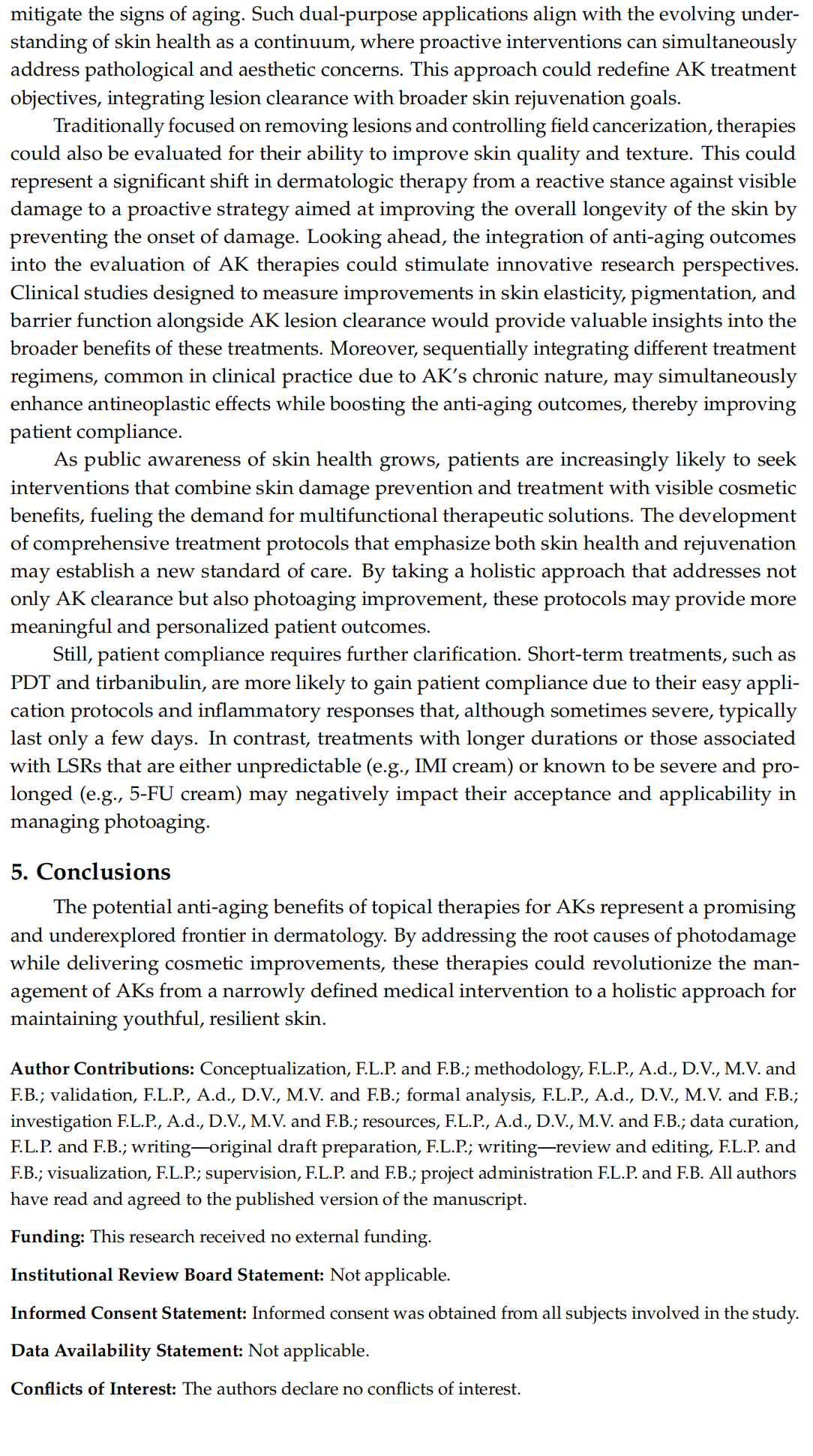
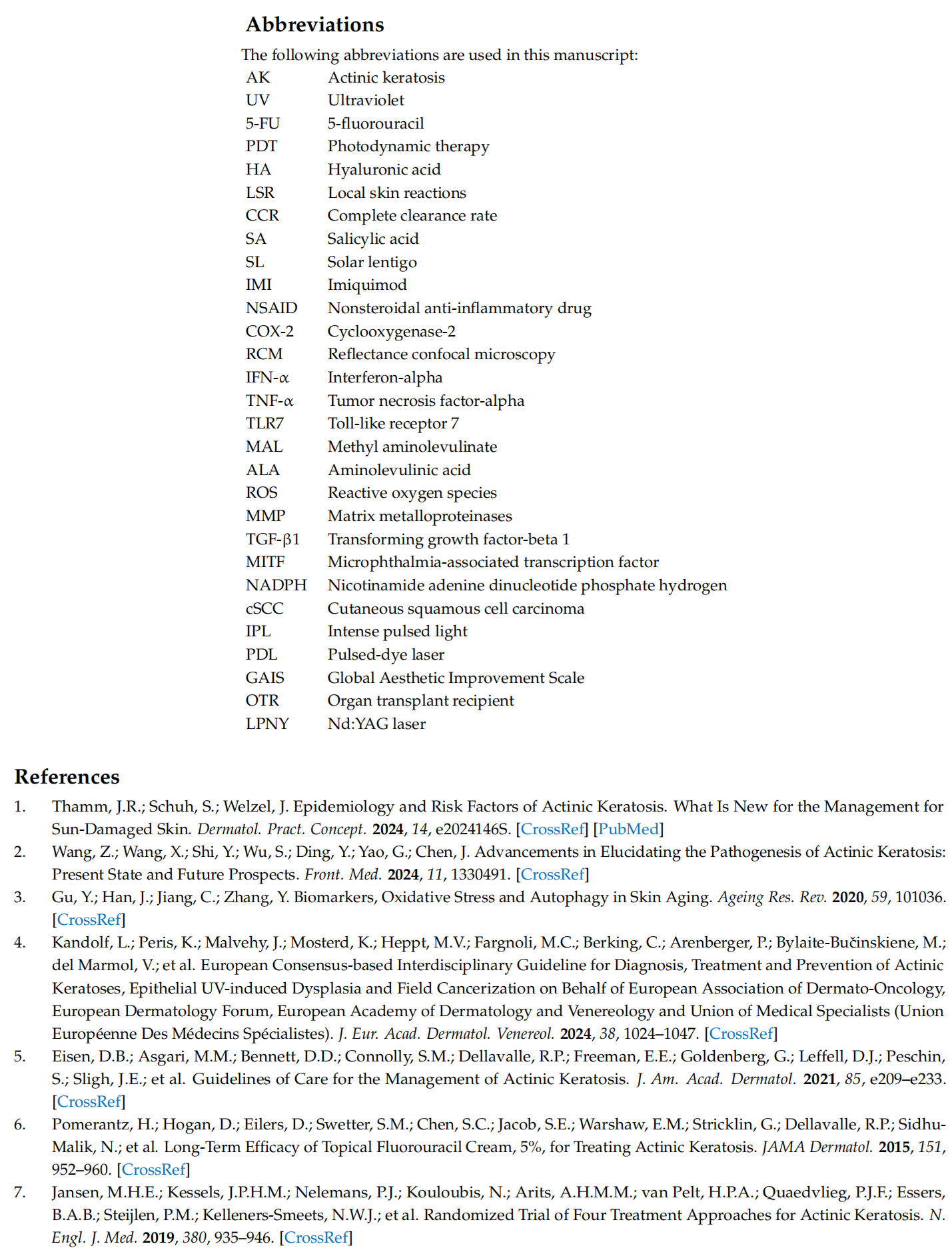
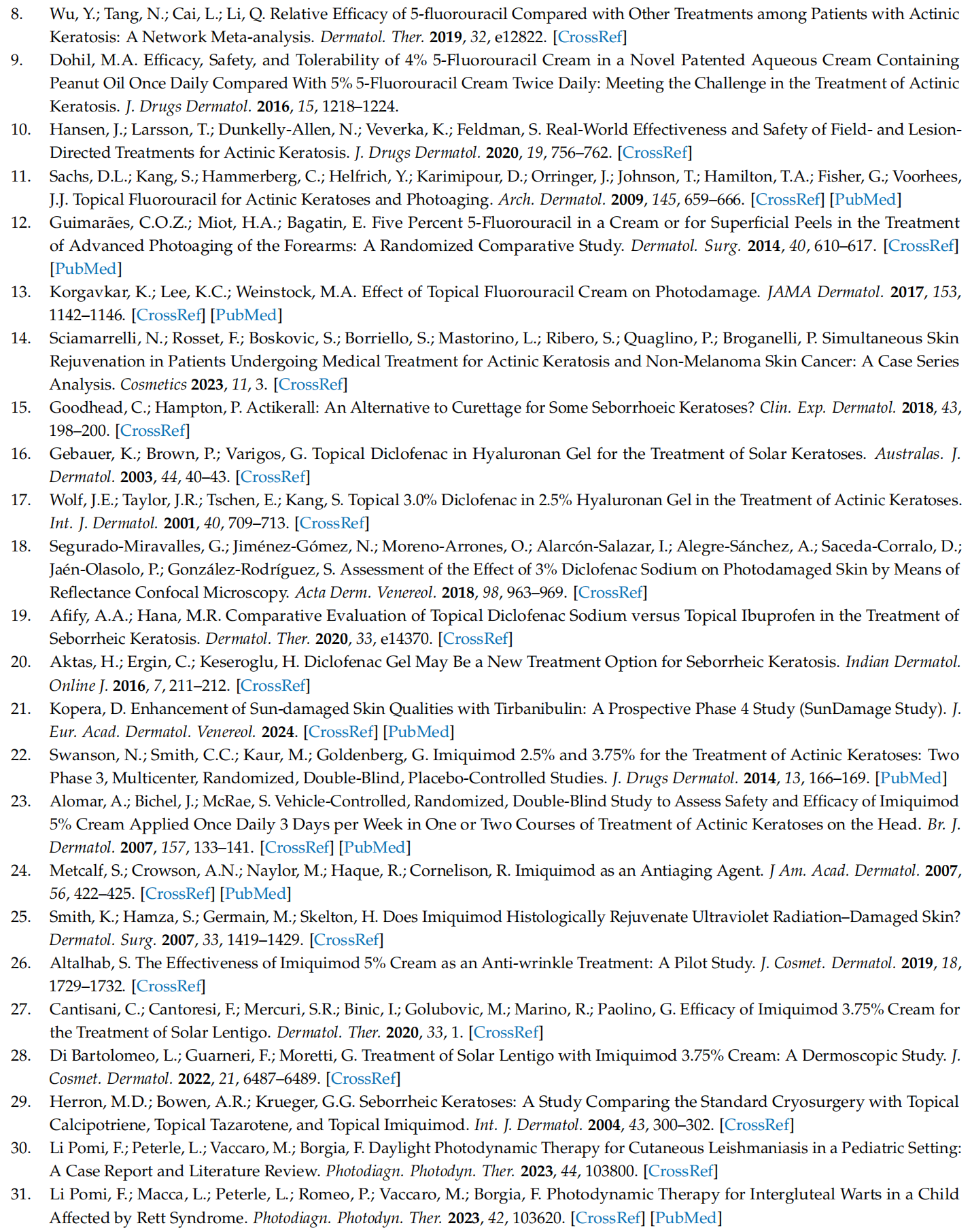
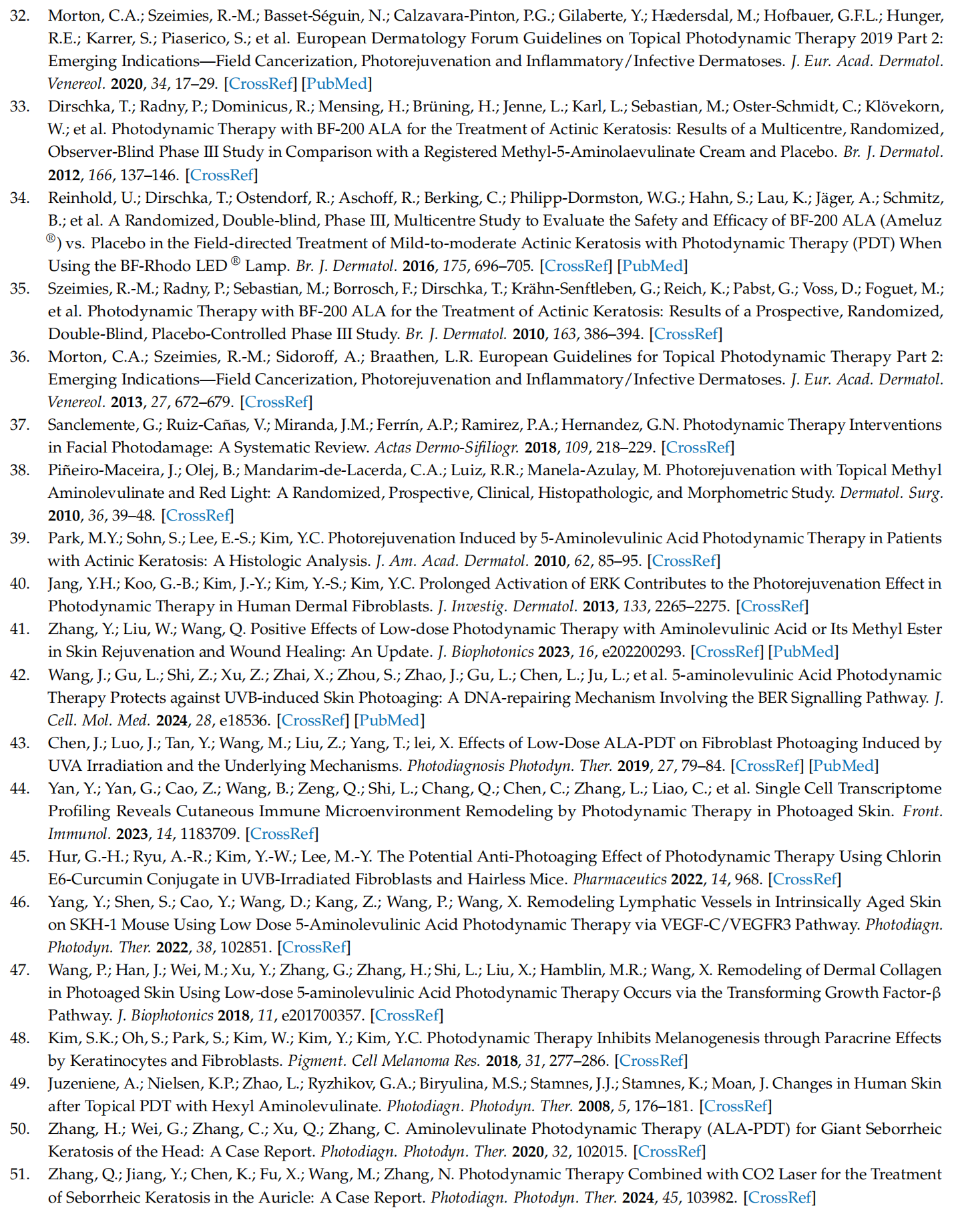
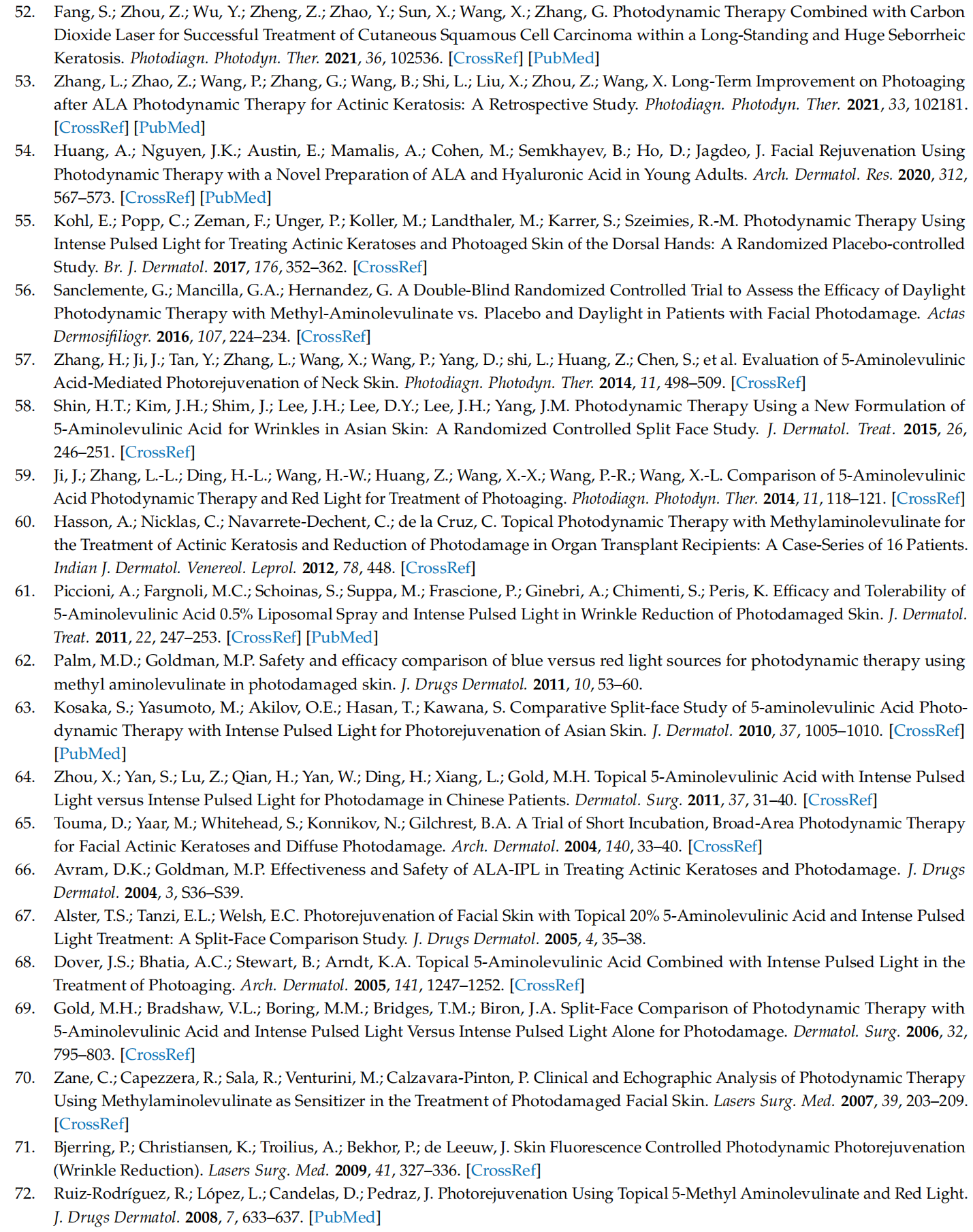
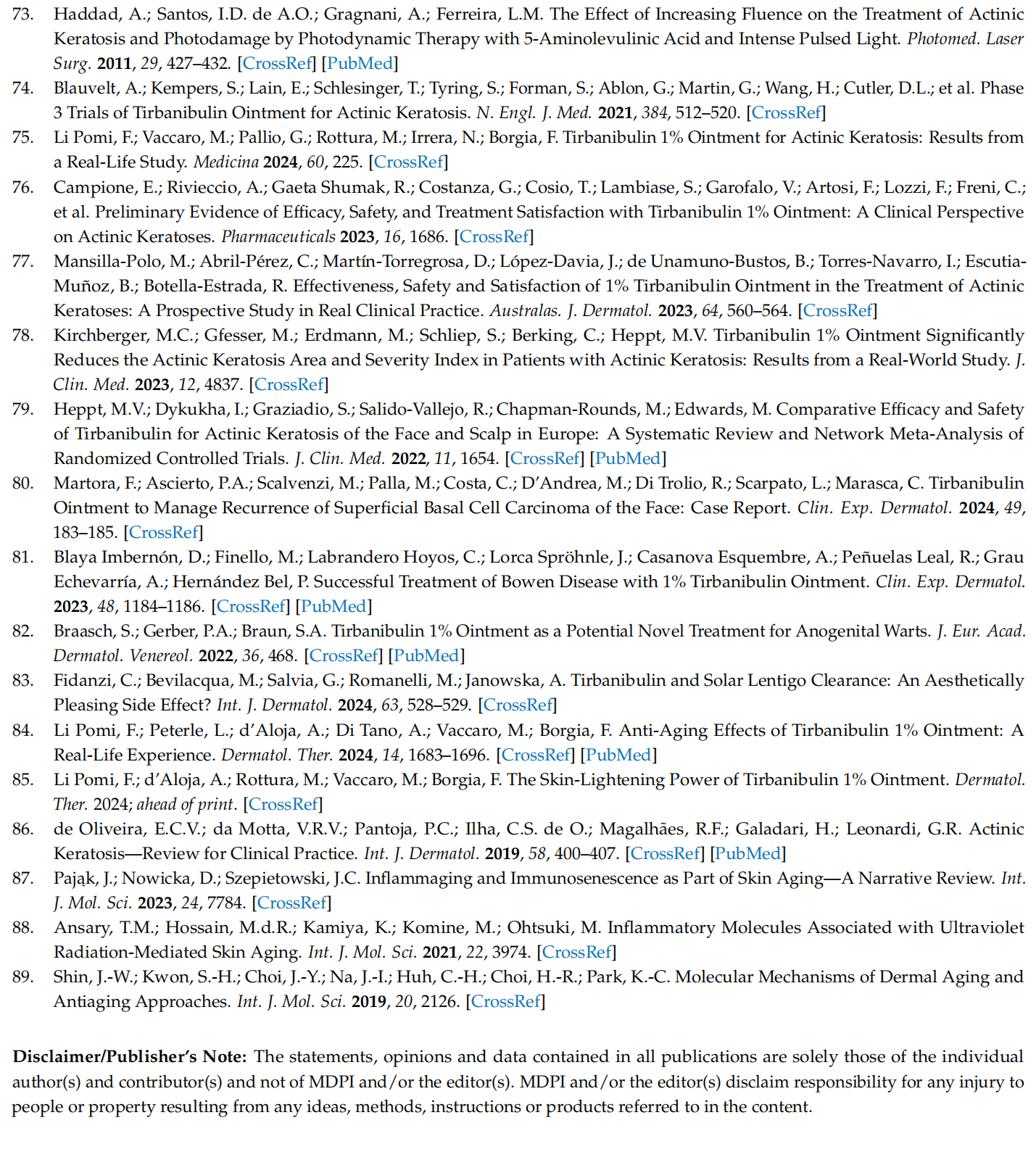
This article is excerpted from the Medicina 2025, 61, 207 by Wound World.
Federica Li Pomi 1 , Andrea d’Aloja 2 , Dario Valguarnera 2 , Mario Vaccaro 2 and Francesco Borgia 2,*
1 Department of Precision Medicine in Medical, Surgical and Critical Care (Me.Pre.C.C.), University of Palermo, 90127 Palermo, Italy; 该Email地址已收到反垃圾邮件插件保护。要显示它您需要在浏览器中启用JavaScript。
2 Department of Clinical and Experimental Medicine, Section of Dermatology, University of Messina, 98125 Messina, Italy; 该Email地址已收到反垃圾邮件插件保护。要显示它您需要在浏览器中启用JavaScript。 (A.d.); 该Email地址已收到反垃圾邮件插件保护。要显示它您需要在浏览器中启用JavaScript。 (D.V.); 该Email地址已收到反垃圾邮件插件保护。要显示它您需要在浏览器中启用JavaScript。 (M.V.) * Correspondence: 该Email地址已收到反垃圾邮件插件保护。要显示它您需要在浏览器中启用JavaScript。
Academic Editor: Vita Lesauskaite.
Received: 3 January 2025
Revised: 14 January 2025
Accepted: 22 January 2025
Published: 24 January 2025
Citation: Li Pomi, F.; d’Aloja, A.;
Valguarnera, D.; Vaccaro, M.; Borgia, F.
Exploring Anti–Aging Effects of Topical Treatments for Actinic Keratosis. Medicina 2025, 61, 207.
https://doi.org/10.3390/ medicina61020207
Copyright: © 2025 by the authors.
Published by MDPI on behalf of the Lithuanian University of Health Sciences. Licensee MDPI, Basel, Switzerland. This article is an open access article distributed under the terms and conditions of the Creative Commons Attribution (CC BY) license
(https://creativecommons.org/ licenses/by/4.0/)
Abstract: Background and Objectives: Actinic keratosis (AK) is a precancerous cutaneous lesion driven by chronic ultraviolet (UV) exposure, often coexisting with features of photoaging, such as wrinkles and pigmentary irregularities. Recent evidence suggests that treatments for AK may also counteract photoaging through shared molecular pathways, including oxidative stress and inflammation. This narrative review explores the dual benefits of AK therapies, highlighting their potential anti-aging and skin-lightening effects, and implications for improving skin appearance alongside lesion clearance. Materials and Methods: The literature was analyzed to assess the efficacy, mechanisms, and cosmetic outcomes of commonly used AK treatments, including topical agents (5-fluorouracil (5-FU), imiquimod, diclofenac, and tirbanibulin), and photodynamic therapy (PDT). Studies highlighting their effects on photoaged skin, collagen remodeling, pigmentation, and patient satisfaction were reviewed. Results: PDT emerged as the most validated treatment, demonstrating improved collagen synthesis, skin texture, and pigmentation. 5-FU showed remodeling of the dermal matrix and increased procollagen levels, but local skin reactions represent a major limitation. Imiquimod enhanced dermal fibroplasia and reduced solar elastosis, while diclofenac provided mild photodamage improvements with minimal adverse effects. Tirbanibulin showed promising aesthetic outcomes, including skin lightening and a reduction in mottled pigmentation, with favorable tolerability. Conclusions: AK therapies offer a dual-purpose strategy, addressing both precancerous lesions and cosmetic concerns associated with photoaging. While PDT remains the gold standard, emerging agents like tirbanibulin ointment exhibit substantial potential. Future research should focus on optimizing treatment protocols and evaluating long-term cosmetic outcomes to enhance patient satisfaction and compliance.
Keywords: actinic keratosis; anti–aging; oxidative stress; photodynamic therapy; skin aging; skin lightening; solar lentigo; tirbanibulin; 5–fluorouracil

















This article is excerpted from the Medicina 2025, 61, 207 by Wound World.